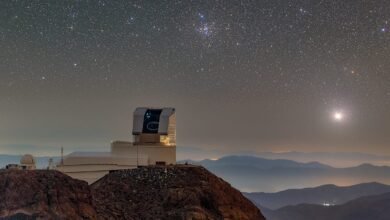Giant ring? Giant arc? These “structures” may not even be real | by Ethan Siegel | Starts With A Bang! | Jan, 2024

Astronomers claim to have found structures so large, they shouldn’t exist. With such biased, incomplete observations, perhaps they don’t.
How large is the largest structure in the Universe? According to our best understanding of the Universe, the mix of radiation, normal matter, dark matter, and dark energy that we have should lead to a rich cosmic web of large-scale structure, where massive objects — like galaxies — cluster together along filaments, and where those filaments intersect, we should expect to find massive galaxy clusters. In the space between filaments should be great cosmic voids: regions with a great underdensity of galaxies and other forms of matter. We should expect structures, such as walls of galaxies, as large as 1–2 billion light-years to form, while the voids might be as large as 3–4 billion light-years across. On larger scales, we expect the Universe to appear relatively uniform.
But a recently claimed discovery of a giant, ring-like structure some 1.3 billion light-years across and 4 billion light-years in circumference — nicknamed “the Big Ring” — now makes it the seventh claimed structure, along with:
ranging from ~2 billion to ~10 billion light-years in size. While the scientists involved with these structures express little skepticism over their reality, pointing to statistical tests that favor their existence and a violation of the cosmological principle, the majority of the astrophysics community remains unconvinced. Here’s why everyone should take the claims that these structures actually exist with a grain (or more) of salt.
Maps and measurements
Source link




